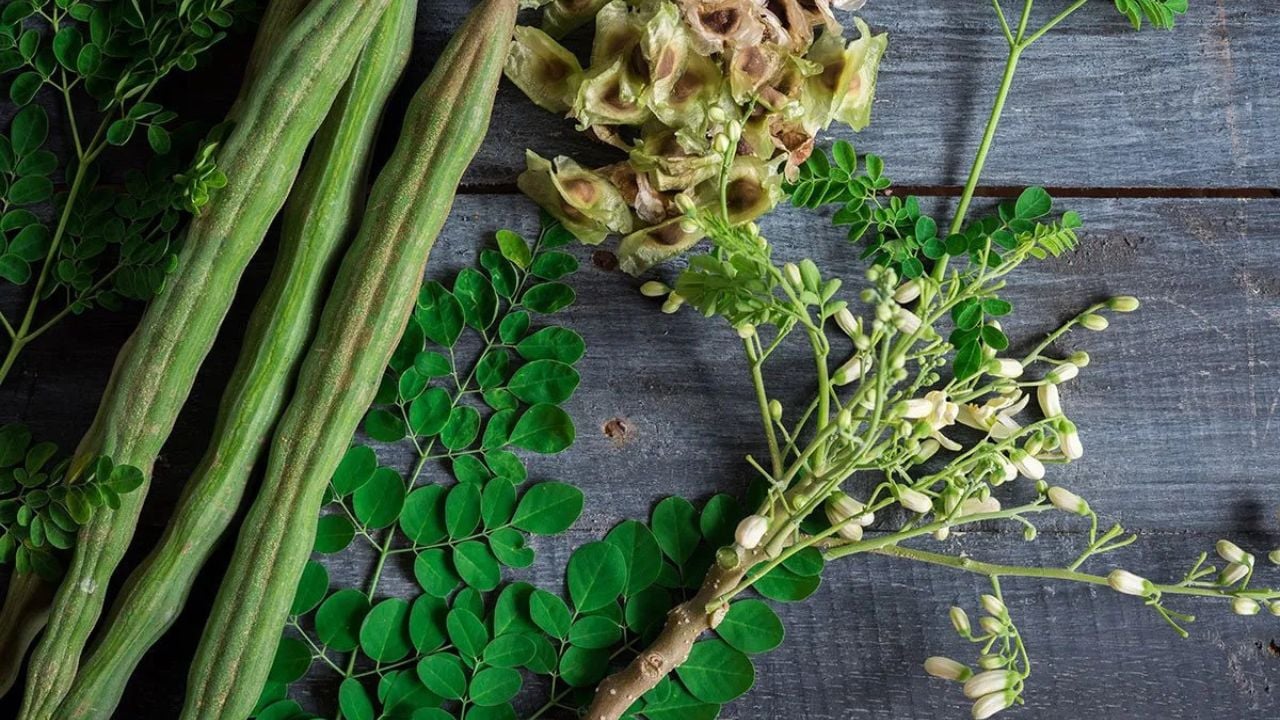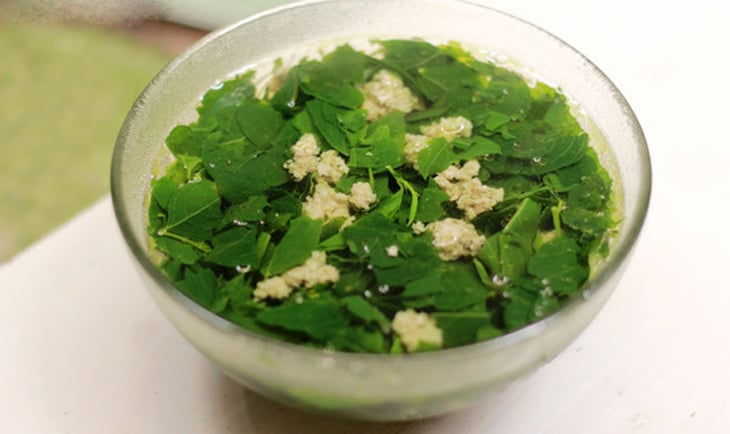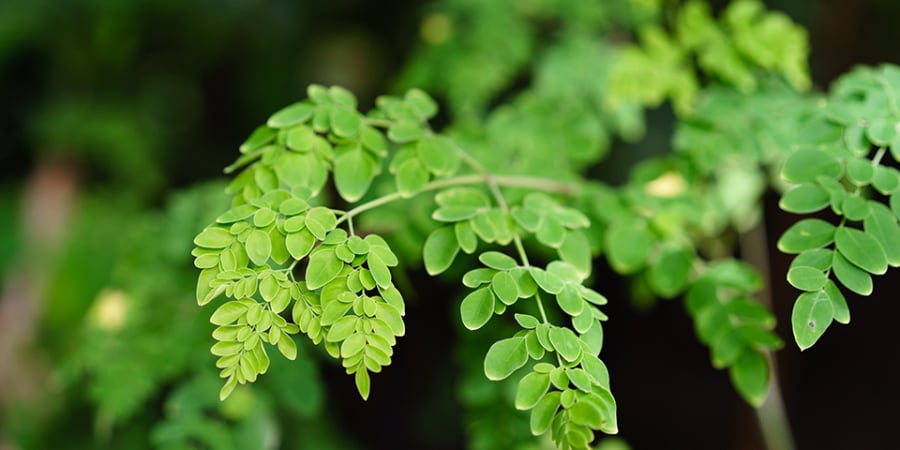Moringa is a woody tree that grows to an average height of 10 meters. As the leaves of the Moringa tree look quite similar to those of the *Rau Ngót* plant, it can be easy to mistake one for the other if you’re not looking carefully. However, Moringa leaves are usually greener, shinier, and rounder than Rau Ngót leaves.
The bark of the Moringa tree is typically smooth and gray, with dense branches and leaves. The leaves grow in clusters, with each leaf having a rounded shape and a hairless surface, and a short stem.
Moringa trees usually bloom from January to April or May each year, marking the end of winter and the beginning of spring. The flowers are white and quite large, and the tree bears fruit after the flowering season. Moringa fruit is elongated, ranging from 30 to 40 cm in length, and is harvested for food, dried for medicinal purposes, or used in other ways…

Moringa is a woody tree that grows up to an average height of 10 meters.
While Moringa used to be a wild tree found along roadsides and bushes in certain regions of Vietnam, such as Thanh Hoa, Binh Thuan, and Phu Quoc, it is now more commonly cultivated and widely available in the country.
Moringa leaves are rich in vitamins, protein, and minerals, making them suitable for regular consumption as a vegetable. Specifically, Moringa has been associated with various health benefits, including cancer prevention, reduced risk of cardiovascular diseases, improved metabolism, liver protection, enhanced immune function, lowered blood sugar levels, and weight loss support.
Additionally, the leaves have a sweet taste and a distinctive aroma, making them versatile in the kitchen. They can be stir-fried with meat, boiled in soups, or used in salads. Although Moringa leaves have a slight astringent taste, they also have a hint of richness that makes them palatable and easy to cook with. Some popular Moringa dishes include shrimp and Moringa soup, ground pork and Moringa soup, and shrimp and meat Moringa salad.
Notably, Moringa leaves are also commonly dried and used for making tea or blended into smoothies. The powdered form of these leaves can even be used as a seasoning…

You can use Moringa leaves to make soup.
**Notes on Moringa consumption:**
– Moringa contains alpha-sitosterol, which can induce miscarriage, so pregnant women should refrain from consuming it.
– Moringa leaves are highly nutritious, especially in terms of calcium and vitamin C content. Therefore, it is advisable not to overeat to avoid an excess of these nutrients.
– Avoid consuming Moringa leaves in the evening, as they can cause insomnia and significantly impact sleep quality.

Do not consume Moringa leaves in the evening to prevent insomnia.
**Notes on growing and caring for Moringa trees:**
– You can propagate Moringa trees through stem cutting or seed germination. Both methods are straightforward, and the trees are generally easy to grow and maintain.
– Moringa trees thrive in loamy, sandy soils rich in nutrients. Opt for well-aerated soils with good drainage.
– Moringa trees have moderate water requirements, so regular daily watering is sufficient. During the rainy season or in winter, reduce the water amount to prevent waterlogging and root rot.
– When planting Moringa, use NPK fertilizers or organic fertilizers. Additionally, apply basal fertilizers periodically, approximately once a month, to promote the tree’s health and growth.

































